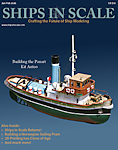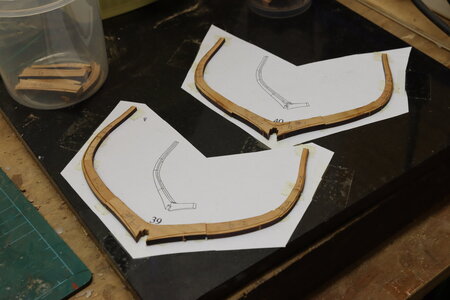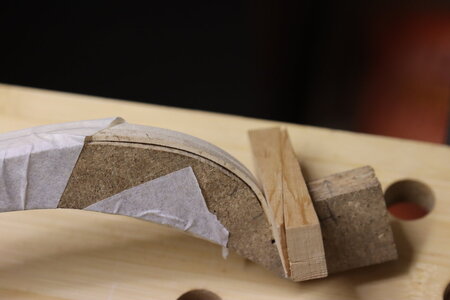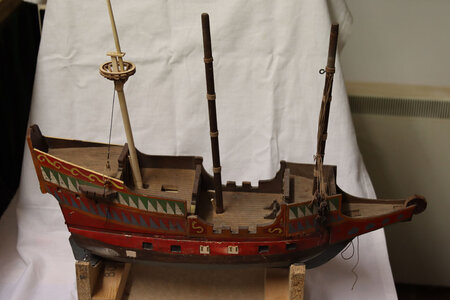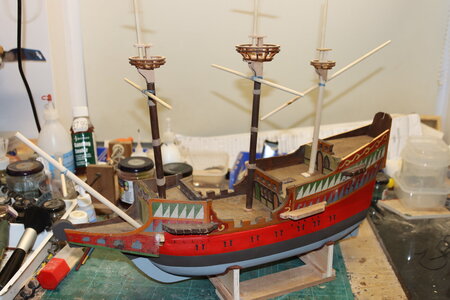Time to start using that excellent jig!
The next logical step was to mount the keel assembly into the jig. I used garden twist tie to hold the keel down snug to the jig baseboard (school of hard knocks - I once didn't hold a keel down on an early model, and found it had risen in the middle slightly. Every time I look at it I Imagine I can see it hogging)
I puzzled over the stern transoms for quite a while, as I couldn't see the kit instructions to be workable (too many indeterminate contact points) and there was quite a bit of forward and backwards 'slop' (movement) where they entered the sternpost. In the end I worked out that I could slot the transoms loose into the sternpost, lock them in still loose with the sternpost knee 3F-1, then mount frames 53 in place temporally, trimming the ends of the transoms as required. When happy, I then glued transoms 5K and 5L-1 onto frames 53 as I permanently fixed the frames.
The lower transoms are still loose, and will be glued from underneath when I have the ship out of the jig. It might sound complicated, but it has given me a nearly perfect fit.

The transoms are still loose at this stage. The green bits are gardening twist-tie holding frames 52 and 51 into the jig.
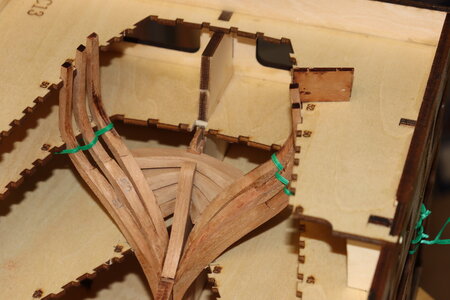
Frame 53 in place, and the top two transoms glued.
Next - move to the bow.
The kit provides two jigs to form the hawse pieces (a - f) They go together very nicely, but be prepared to have to trim the C10-2 and C12-2 depending on how much sanding you have done on the back face of the frames. Also check very carefully the thickness of the spacers 2A-1 to 4. Mine were too thick and had to be adjusted to get the spacing right.
I haven't actually mounted them permanently on the stem and keel. My intention, when I have all the other frames mounted, is to cut off the front of the jig so I can gain better access to the stem, and fit the hawse frames very accurately to the rabbet lines. I've also left the first cant frame unglued to the external strengthening band so I can shift it slightly if necessary. (Good example of how you need to be reading instructions some way ahead of you, and visualising the required steps)
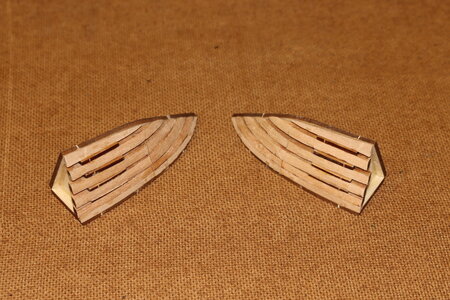
All for now, dinner calls!
Ted
The next logical step was to mount the keel assembly into the jig. I used garden twist tie to hold the keel down snug to the jig baseboard (school of hard knocks - I once didn't hold a keel down on an early model, and found it had risen in the middle slightly. Every time I look at it I Imagine I can see it hogging)
I puzzled over the stern transoms for quite a while, as I couldn't see the kit instructions to be workable (too many indeterminate contact points) and there was quite a bit of forward and backwards 'slop' (movement) where they entered the sternpost. In the end I worked out that I could slot the transoms loose into the sternpost, lock them in still loose with the sternpost knee 3F-1, then mount frames 53 in place temporally, trimming the ends of the transoms as required. When happy, I then glued transoms 5K and 5L-1 onto frames 53 as I permanently fixed the frames.
The lower transoms are still loose, and will be glued from underneath when I have the ship out of the jig. It might sound complicated, but it has given me a nearly perfect fit.

The transoms are still loose at this stage. The green bits are gardening twist-tie holding frames 52 and 51 into the jig.

Frame 53 in place, and the top two transoms glued.
Next - move to the bow.
The kit provides two jigs to form the hawse pieces (a - f) They go together very nicely, but be prepared to have to trim the C10-2 and C12-2 depending on how much sanding you have done on the back face of the frames. Also check very carefully the thickness of the spacers 2A-1 to 4. Mine were too thick and had to be adjusted to get the spacing right.
I haven't actually mounted them permanently on the stem and keel. My intention, when I have all the other frames mounted, is to cut off the front of the jig so I can gain better access to the stem, and fit the hawse frames very accurately to the rabbet lines. I've also left the first cant frame unglued to the external strengthening band so I can shift it slightly if necessary. (Good example of how you need to be reading instructions some way ahead of you, and visualising the required steps)

All for now, dinner calls!
Ted


